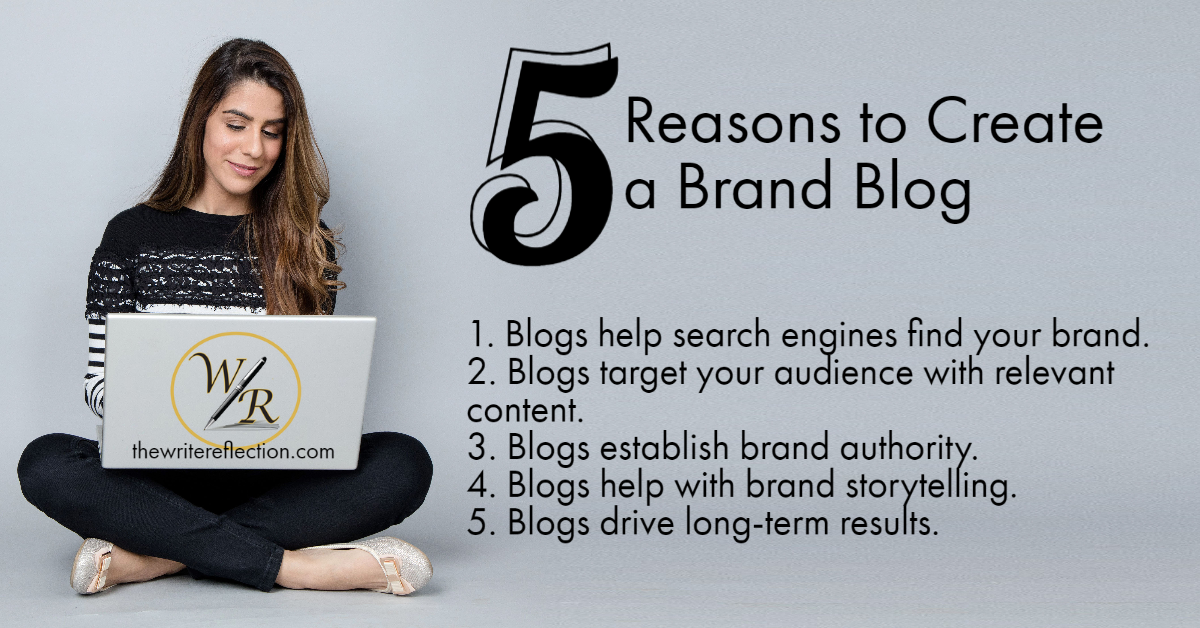|
Selling fear works. If it didn’t, marketers would have abandoned this technique a long time ago. The sad truth is that tapping into your target audiences’ fears can motivate them to rush right out and buy your product or service whether they need it or not. Sending them into panic mode about a potential risk and offering up your brand as the solution can drive sales like nobody’s business. Fear-based marketing has the potential to perform twice as well as other styles of marketing campaigns because it triggers an emotional – not rational – response from our brains. Fear is not the only emotion marketers use to elicit a strong response from consumers. Making people happy or sad also can work in an advertising campaign. Happiness makes people want to share the reason for their feelings, while sadness can evoke empathy and connection. However, fear does something that happiness and sadness can’t – it builds brand loyalty. Think about it. When people are scared or anxious, what do they do? They cling to what is comfortable and familiar. Brands that play the fear card well can entice consumers to view them as the light at the end of the proverbial tunnel, increasing their sales. It’s a sneaky trick, but it works. I know what you must be thinking. If fear-based marketing works this well, why would any brand not use it? I’m going to go out on a limb here and suggest something radical. People are tired. They are emotionally and physically drained from two-plus years of a pandemic that has paralyzed them with fear. Panic fatigue is real, and some people have reached their limits. What people seek now is hope. Brands that inspire their target audiences have a better chance of building long-lasting relationships with them. Here’s how to stop selling fear in 2022 and give hope instead. The science behind selling fearMore than a hundred years of psychology and behavioral science research supports the notion that people seek experiences that make them feel good while avoiding those that cause them pain. Fear-based marketing urges consumers to act based on their fears. The model consists of three elements:
Fear-based selling techniques are manipulative, and consumers have become wise to them. Too much of it can create burnout, prompting audiences to turn away from your brand instead of running toward it. Even when you present an immediate solution that involves your products or services, you risk creating a one-time customer who has no emotional connection to your brand. Is it worth it? Probably not. Is fear-based marketing ethical?I would be remiss if I devoted an entire blog to the topic of fear-based selling tactics without addressing whether they are ethical. The ethics of fear-based marketing has been a hot topic among communications and marketing professionals for years. Triggering fear in your intended audience has social, physical, and emotional ramifications that can border on unethical business practices. Let’s take a closer look at why I feel this way.
How selling fear can go wrongI’ve already explained that fear-based marketing tactics can be extremely effective. It’s why so many companies use them. However, convincing your target audience to make quick – possibly irrational – decisions based on their anxiety can backfire. Here are some ways focusing on fear can go terribly wrong.
Make customers feel happy, not scaredFinding new customers can be downright difficult for some brands. Launching advertising campaigns can be costly, so some businesses choose to focus on customer retention rather than finding new leads. Building customer relationships through inspirational messaging is one of the most effective ways to boost engagement and overall satisfaction with your brand with existing clients. It is an investment that produces amazing returns when done well. When customers feel happy about your products or services and secure in their relationship with your business, they turn into brand loyalists with the power to increase your profits by 25 to 95 percent. Not only do they keep coming back to do more business with you, but they also recommend your brand to their family, friends, and colleagues. Word-of-mouth recommendations are more effective than paid ads, producing five times the sales. As a bonus, winning over your target audience can safeguard them from competitors eager to scoop them up. Brands that give hope, not fearSome brands have hope marketing down to a science. They do it and do it well. Here are just a few of the inspirational campaigns that have stood out to me as winners over the last couple of years.
Replace selling fear with relationship-buildingBrands that commit to replacing selling fear with relationship-building efforts can increase brand loyalty among current clients and attract new customers. Establishing an authentic brand voice and offering value can lead to lasting customer relationships that increase sales without evoking panic. Here are some ways brands can do it.
Wave goodbye to scare tacticsCustomers are complex. Brands that reduce their target audiences to a basic fear response do them a great disservice by overlooking their overall value. They reduce consumers to nothing more than dollar signs, which is not the best way to achieve sustainable growth. Here are some better ways to build lasting relationships with your client base to keep them coming back without the scare tactics to drive them.
0 Comments
A brand without a blog is like an Oreo cookie without its creamy center. I know what you must be thinking. What about social media? Podcasts? Email newsletters? All these communication tools have their place in your marketing plan. Still, none have the power to build your business the way a well-written blog can. Blogging remains one of the most effective ways to boost brand awareness and reach target audiences. A business blog gets twice as much traffic from content than email campaigns. Authoring content relevant to consumer searches guides consumers to your products and services while establishing your brand as an authority. Do you need more convincing that a brand blog is the way to go in 2022? Here are some reasons to compel your brand to give blogging a go. Blogs help search engines find your brandSearch Engine Optimization (SEO) is a tricky skill. Just when you think you have mastered it, search engines like Google change their algorithms. Using SEO when you blog is worth the effort. Professional bloggers and SEO copywriters rely on keyword research to discover which keywords will help your content rank higher organically. For instance, let’s say you want to blog about choosing an air purification system to reduce the spread of germs in residential settings. Using a keyword tool identifies words relating to the topic based on search engine activity. Plugging in the phrase “air purification system germs” and optimizing for Google produces a list of potential keywords to include in your content. Some of the suggestions:
In addition to SEO, you also can find out what searchers are looking for by doing a search yourself. Go to your search engine of choice and enter “air purification system germs” again. The results will produce a list called “Common Searches” that reveal the key phrases others are using to find information related to this topic. Include those in your blog as subheadings to maximize your searchability factor. This is super easy to do in a blog. Blogs target your audience with relevant contentHard as it is to imagine, businesses did not always have the advantage of touting their wares online to a global audience. Once upon a time, they had to print ads, buy mailing lists, and send those mailers out to potential customers in their service area to entice them. Direct mail campaigns have not completely disappeared. They can be quite effective under the right circumstances. However, they can eat into your advertising budget. The average cost to produce and send a direct mail advertisement is between 30 cents and $10 per mailer. Cost varies and depends on whether you use professional copywriters and designers to produce the advertisement and a printing/publishing company to mail them. Blogging eliminates much of the cost associated with targeted mailing campaigns. Hiring a professional writer to plan and produce the content can cost between $50 and $2,000 depending on the blogger’s experience level and length of content produced. While you certainly can find writers who will crank out a blog post for $30, you likely will not get the kind of quality that tickles the fancy of Google and other search engines. Copywriters that charge low rates tend to produce “copy mill” content that is recycled from other information they find online. Search engines look for relevant content that adds value. Producing copy that helps your target audience solve a problem attracts both prospective customers and search engines. “How to” blogs featuring your products or services can attract an audience and eventually convert them into valuable customers or business partners. Blogs establish brand authorityBuilding your brand requires earning the trust of your customers. This is known as brand authority. An effective method for gaining customer confidence is to provide relevant content that solves problems or answers questions. Establishing brand authority is easy with a well-crafted blog. Choose topics to which your target audience can relate. Then, commit to producing the kind of quality content that will have them returning to your site for more tips and tools. Brands that provide accurate and compelling content build lasting relationships with their target audience that convert to eventual sales. Once consumers realize your blog is a source of valuable and trustworthy information, you can build rapport. Helping customers solve a problem before do business with your brand convinces them to return when they need your products or services. After repeated exposure to your blog, they will view you as an authority. They enter the sales funnel with pre-existing knowledge of what you bring to the table, making it easier to convert them. Blogs help with brand storytellingConsumers today want more than impersonal sales transactions with a brand. They want to connect with your products or services and the people behind them. Blogging is an effective way to tell your brand story and give target audiences a reason to return to your business. You can feature news about team members doing incredible things in their communities or announcements about the launch of helpful new products or services. Best of all, since it is your blog, you can control what information is shared and verify its accuracy before publication. Blogging allows businesses to show their human side. Customers never want to feel like they are nothing more than dollar signs. Humanizing your brand can help flip the narrative. There is no limit to what kind of storytelling you can do on a brand blog. Blogs drive long-term resultsBlogs are the gift that keeps on giving. Sure, you might spend $1,000 on a professionally crafted piece of content, but it has the potential to drive long-term results. Once you hit that post button, blogs can continue to drive traffic to your site and convert customers eager to do business with you. Blogs that perform well in search engines offer the best return on your investment. Once your blog begins ranking, it remains relevant in most search engines for months or years, depending on the topic and how much competition there is for the SEO keywords. Well-written blogs continue to work hard for your business. Copywriting professionals call them compounding posts because they contain evergreen content that continues producing leads. Hiring a pro to help with your brand blogBefore you rush off to your computer and start writing your first blog, you may want to consider bringing in a pro to assist. Just because anyone can write does not mean they should write. Content production is not as easy as it sounds. First, you must develop a content strategy that aligns your mission, vision, and values with any copy produced and published. Then, you must identify your target audience. Your brand cannot provide value without fully understanding who it is serving. Other aspects go into content planning, including competitive analysis and researching information from credible sources. A professional blog writer can assist with these steps required to establish your brand authority through blogging. Reach out to the brand blogging experts at The Write Reflection™ to learn how we can leverage the power of blogging for your brand. First-time customers receive a 25 percent discount on their first blog order. AuthorShari Berg has known she wanted to be a writer since she was old enough to hold a pencil in her hand. She believes everyone has a story to tell, and it’s her job to discover it. Shari owns The Write Reflection, a Pittsburgh-based copywriting and content writing company that empowers small business owners to wield the power of words. Ah, Google. Anyone who knows me knows that I have a love-hate relationship with this top search engine. Google’s complex search algorithm likes to keep SEO copywriters guessing. No one quite knows how it works. If they say they do, they are spinning tales. Following Google’s webmaster guidelines can help somewhat, but it is not a complete roadmap for search-ranking success. When Google first launched, it only updated its algorithms a few times during the early years. Now, it makes thousands of changes every year, frustrating SEO experts frantically trying to keep their clients at the top of Google search results. Why do we even bother, you ask? Nearly 87 percent of global users turn to Google to find what they need. SEO copywriters and web designers feel pressured to play the Google game to get their clients found online. It rarely ends well. Playing the Google game hurts your brandFor many years, SEO copywriters would awkwardly plug industry-relevant keywords into on-page copy, hoping to attract the favor of the almighty Google. Sure, Google found their content. It may have even rewarded it with the number-one spot on page one of search results for the ranking keyword. The problem is that the content was written for an algorithm and not real people. Real people tend to find keyword-stuffed jargon disinteresting (and that is being kind about it). I have read some truly awful copy online from writers trying to get Google’s attention while forgetting their target audience. Herein lies the problem of playing the Google game. Your content is unreadable. Peppering your content with industry-relevant keywords might get traffic to your site, but what happens once they are there? Do they connect with your brand in an engaging and meaningful way? Or do they take one look at the nonsensical words that were super appealing to Google (but not so much for real customers) and show themselves the door? Playing the Google game can hurt your brand. Putting people first is a better solution. Why you must write for real peopleReal people like to have their questions answered. After all, that is why they turned to a search engine in the first place. Maybe they were looking for an auto repair shop near them or checking out reviews for a restaurant. What they were not seeking was content sprinkled with SEO keywords in sentence after sentence that all say the same thing without ever really addressing their concern. Some SEO experts claim it is too difficult to write for both people and search engines. I agree that it is more challenging but not impossible. Storytellers who know how to leverage the power of SEO can do both. Here are four ways to put people first in your copy that guarantees results.
Put people first, SEO keywords secondDigital content should rank well with search engines, but never at the expense of your target audience. It is entirely possible to craft engaging content that sucks readers in while also tickling the fancy of search engines like Google. What is the magical secret? Putting people first and SEO keywords second. Weave a tale that turns readers into the heroes of their journeys with your brand. Toss in a few well-placed industry keywords and – voila! – you have the magic recipe for appealing to both people and web crawlers.
Not sure you can master the art of putting people first in your content? No worries, mates. That is why SEO copywriters exist. Drop us a line here at The Write Reflection™ and we can arrange a time to chat about your needs. |
Categories
All
Archives
April 2024
|








